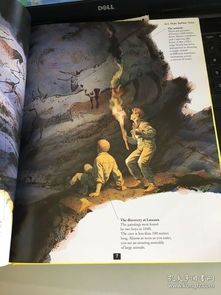Content:
Fishing in mountain streams can be an incredibly rewarding experience, offering serene surroundings and the thrill of catching fish in their natural habitat. However, the techniques used for fishing in mountain streams differ significantly from those employed in lakes or ponds. This article delves into the art of fishing in mountain streams, providing valuable tips and techniques to help you master this enchanting pastime.
Understanding Mountain Streams
Mountain streams are characterized by their swift currents, rocky beds, and a variety of aquatic life. These streams are home to species such as trout, salmon, and other freshwater fish that have adapted to the challenging environment. To fish effectively in these streams, it's essential to understand their unique characteristics.
Choosing the Right Gear
The first step in fishing in mountain streams is to select the appropriate gear. Here are some essential items to consider:
Rod and Reel: A lightweight, flexible rod and a compact reel are ideal for mountain streams. The rod should be between 6 to 8 feet long, and the reel should be capable of handling the line you'll be using.
Line: Use a monofilament line with a breaking strength of 4 to 6 pounds. The lighter the line, the more sensitive it will be, allowing you to detect subtle movements from the fish.
Hooks: Small hooks, such as sizes 8 to 14, are suitable for mountain streams. The size depends on the type of bait you're using and the size of the fish you're targeting.
Bait: Natural bait, such as worms, insects, or minnows, is often the most effective in mountain streams. Artificial lures can also be used, but they should mimic the natural prey of the fish you're targeting.
Tackle Box: Carry a small tackle box with essential tools, including needle-nose pliers, a knife, and a pair of forceps.
Locating the Best Spots
Mountain streams can be unpredictable, so it's crucial to find the best spots to fish. Here are some tips to help you locate productive areas:
Observe the Stream: Look for areas with slower currents, such as pools or back eddies. These spots are often where fish congregate to rest or feed.
Identify Hatching Times: Pay attention to the weather and water conditions. Fish are more active during periods of stable weather and water temperatures.
Explore the Bank: Walk along the bank and look for signs of fish, such as nibbles on the surface or disturbances in the water.
Check the Bottom: The rocky or sandy substrates can hold fish. Look for areas where the bottom is broken up by rocks or other obstructions.
Fishing Techniques

Once you've found a good spot, it's time to apply the right techniques:
Nymphing: This technique involves using a weighted fly or lure to imitate an aquatic insect or nymph. Cast the nymph upstream and let it drift naturally downstream, using a slow and steady retrieve.
Dry Fly Fishing: For dry fly fishing, use an artificial fly that imitates an adult insect. Cast the fly across the stream and let it land softly on the water. Then, make short, gentle strips to imitate the insect's movement.
Streamers: Streamers are long, flexible lures that resemble swimming prey. Cast the streamer upstream and retrieve it with a erratic, lifelike motion to attract fish.
Still-Fishing: For still-fishing, simply cast your lure or bait into a productive area and wait for a bite. This technique requires patience but can be effective in calm conditions.
Tips for Success
Here are some additional tips to help you increase your chances of success when fishing in mountain streams:
Be Quiet and Patient: Mountain streams are sensitive environments. Move slowly and speak softly to avoid spooking the fish.
Adjust Your Techniques: Be prepared to adapt your techniques based on the weather, water conditions, and the behavior of the fish.
Practice Sensitivity: The key to fishing in mountain streams is being able to detect the subtlest of movements. Practice your casting and retrieving to improve your sensitivity.
Respect the Environment: Always follow local fishing regulations and practice ethical fishing. Leave the stream as you found it to preserve the natural habitat for future anglers.
Fishing in mountain streams can be a challenging yet incredibly rewarding experience. By understanding the unique characteristics of these streams and applying the right techniques, you'll be well on your way to becoming a skilled mountain stream angler. Remember to enjoy the journey and the serenity of the natural surroundings as much as the thrill of catching fish. Happy fishing!












